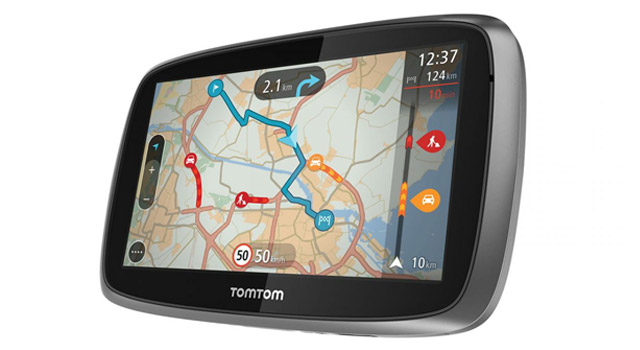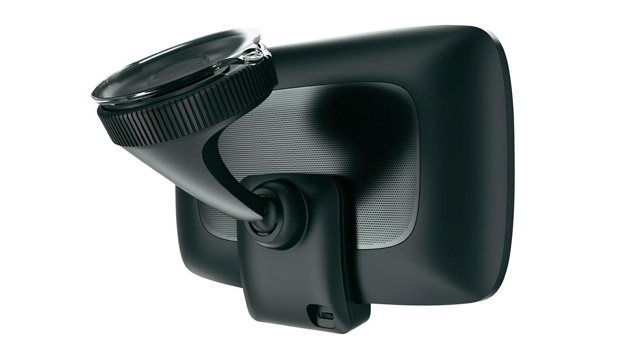
Satellite-based personal navigation devices (PNDs) have lost significant market share to smartphones in recent years. Devices that were once an important part of many drivers’ lives have become all but obsolete in an era where Google, Apple, Microsoft and others offer free navigation with arguably more up to date map data.
It’s become difficult for consumers to justify the extra cost associated with personal navigation devices.
Into this scenario, one of the biggest players in the PND market, TomTom, is again trying to capture the consumer market with an in-car GPS navigator, the TomTom Go 5000, which was recently launched in South Africa.
It seems to us that with their latest PNDs, manufacturers like TomTom and fierce rival Garmin are going back to basics, getting rid of frivolous features that nobody really used such as Bluetooth pairing with smartphones.
The Go 5000 is certainly a well-crafted piece of gadgetry. It weighs 235g and features a minimalist design with smooth corners and a single button. It has a large, 5-inch LCD display, but it’s let down by a low resolution of just 480 x 272 pixels. If you are used to using a smartphone to handle your GPS navigation, you’ll notice the poor screen quality immediately. And although TomTom has done a good job of improving the look and feel of its interface and maps, it still looks dated in comparison to smartphone navigation software.
The bundled dash mount features an innovative twist suction cup that makes it easy to attach to the windscreen. There is also a micro USB cable included and a 12V in-car socket adapter to power the device.
If you have not used a dedicated GPS device for a while, you may be surprised to learn that some new models, including this one, have built-in connectivity that allows them to receive the latest traffic information without needing to connect to another source.
The built-in data connectivity, called Always Connected, is free to use but is limited to providing updated data to the device. TomTom also has roaming agreements with a number of countries, so users are able to take the Go 5000 abroad without worrying about incurring additional data costs, although the correct maps will first need to be installed. Users who buy the South African version of the Go 5000 will receive the complete Africa map pack.
The Always Connected technology is also used to send data back to TomTom’s servers. This is useful for reporting the location of speed cameras, a feature that is built into the software and can be accessed from the main menu.
While traffic and map updates are free for the lifetime of the device, users have to pay for TomTom’s Speed Cameras feature. New users get three months free, after which a yearly subscription of R407 is payable. The subscription provides access to the most up-to-date fixed and mobile speed camera locations. TomTom says it delivers twice-weekly updates.
TomTom has improved the ease of use of its PNDs by removing many of the features people rarely used. The result is a simple menu interface with the most important features available with three clicks or less. Finding points of interest such as saved places, petrol stations and public parking is now much easier.

There is also a hands-free voice navigation mode that allows drivers to control the Go 5000 using voice commands. While the success rate for voice recognition is not 100%, the feature works well enough to report a speed camera or to navigate to a saved place of interest. By simply saying “go to address” or “go home”, the Go 5000 managed in our tests to provide navigation without us needing to take our hands off the wheel.
The Go 5000 also features 3D mapping that turns buildings and landmarks into 3D structures on the navigation map. Although this is only available in selected areas, the most important hubs are covered, including South Africa’s major cities and suburbs such as Sandton.
Custom voice navigation provides downloadable voice packs that allow you to receive voice guidance from any of a number of celebrity characters, including those from The Simpsons and Star Wars.
It is hard to find fault with the Go 5000. It works well and its traffic information is accurate enough to avoid major traffic jams.
The benefit of using a PND over a smartphone is largely be felt by road warriors, people who travel by car for the most part of their day. The larger screen is also much easier to operate when entering destination details and reporting the location of traffic cameras.
The TomTom Go 5000 is available at a recommended retail price of R4 199 and, apart from the yearly speed camera subscription, there are no other fees to pay. For some, this will be a great addition to their daily commute. For most, though, Google Maps is more than adequate. — © 2014 NewsCentral Media

